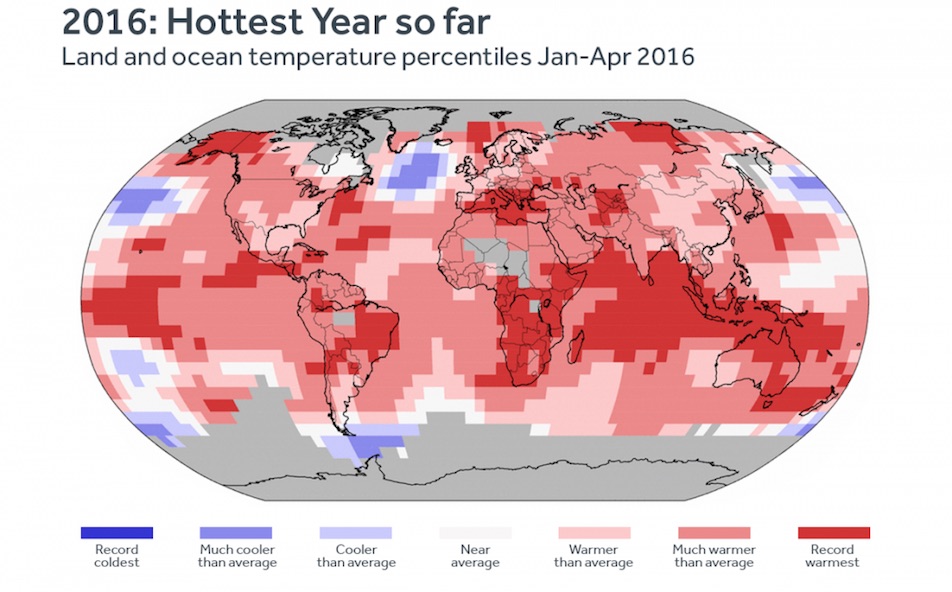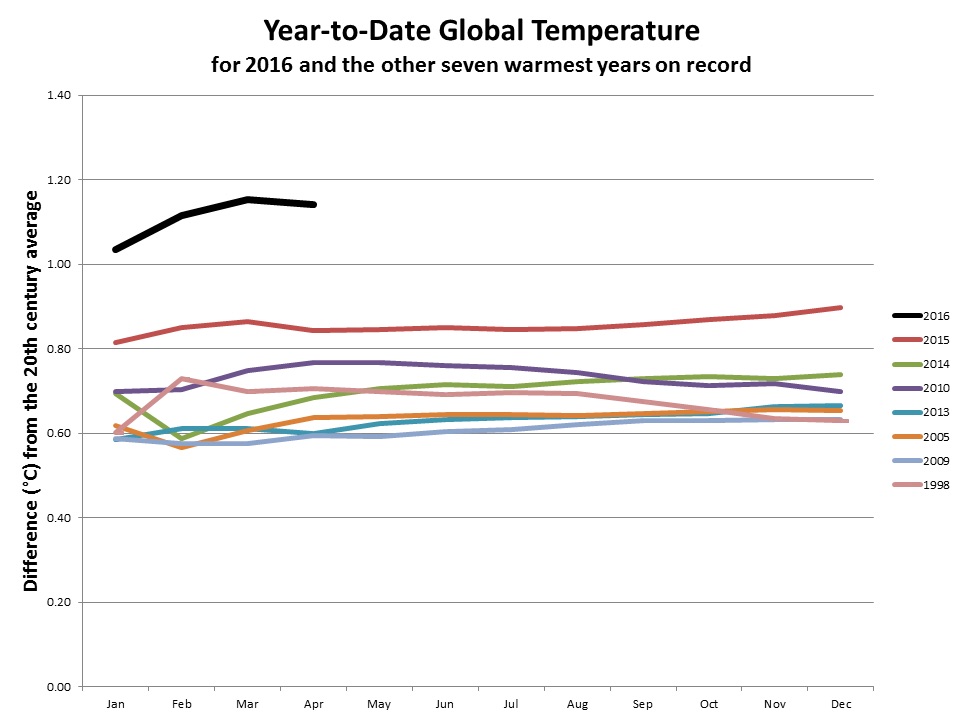By Bill Dawson
Texas Climate News
Ready for still more global warming records? Well, ready or not, new ones keep being set.
Following the planet’s hottest year on record by a record margin in 2015 and more records since then, two U.S. science agencies and a counterpart agency in Japan declared in recent days that their analyses showed last month was the hottest April on record.
The National Oceanic and Atmospheric Administration said it marked the 12th straight month – an “unprecedented streak,” one NOAA scientist said – that a monthly heat record had been broken.
In addition, NOAA said, the January-April period this year was the hottest initial four months of any year in its 1880-2016 record.
NOAA also said the Northern Hemisphere snow cover of 890,000 square miles was the smallest April snow cover for that half of the earth in a 50-year period of record-keeping.
Both NOAA and NASA, the other U.S. agency announcing a new record in April, said their differing calculation and comparison methods also agreed that April’s average global temperature did not set that month’s new record by as great a margin as the January and February temperatures had done.
Climate scientists have said the run of warm-temperature records in recent months has been largely attributable to manmade climate change, but got a boost from an exceedingly strong El Niño weather pattern, which is now waning. It’s likely, NOAA said, that a La Niña patter will replace it in the latter part of the year with a relative cooling effect on global temperatures.
Even so, the director of NASA’s Goddard Institute for Space Studies, Gavin Schmidt, observed on Twitter that the April numbers mean there’s greater than a 99 percent chance that 2016 will eclipse 2015 as the hottest on record.
Andrew Dessler, a climate scientist at Texas A&M University, told the Associated Press, regarding the new April record: “These kinds of records may not be that interesting, but so many in a row that break the previous records by so much indicates that we’re entering uncharted climatic territory (for modern human society).”
In a separate announcement this week, NOAA said its 10th Annual Greenhouse Gas Index showed that human activity has increased the direct warming effect of carbon dioxide, the principal human-produced greenhouse gas, in the last quarter-century by 50 percent above pre-industrial levels.
“In 2015, the global average CO2 concentration reached 399 parts per million, increasing by a record amount of almost 3 ppm,” the agency said. “From the end of the Ice Age to the beginning of the industrial era, atmospheric carbon dioxide remained remarkably stable at 278 ppm.”
Climate Central, a private, nonprofit research and reporting organization, said its scientists’ independent analysis of data released by NOAA and NASA reveal that the earth’s average 2016 temperature through April is 1.45 degrees Celsius above the average from the 1881-1910 period.
That’s getting close to the limit in the more ambitious – and so far more aspirational – of two goals in the landmark Paris Agreement in which 195 nations agreed to limit global warming last December.
The nations agreed to work to keep the planet’s average temperature increase to “well below 2 degrees C” above “pre-industrial levels” (around the year 1750) while also “pursu[ing] efforts to limit the temperature increase to 1.5 degrees C” because that would “significantly reduce the risks and impacts of climate change.”
+++++
Bill Dawson, a journalist covering climate change since 1988, is the founder and editor of Texas Climate News.
Image credits: Map – Climate Central, based on NOAA data; Chart – NOAA


